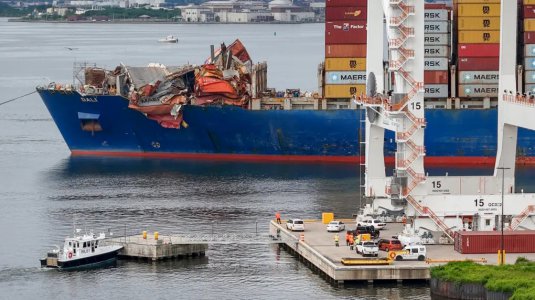- Joined
- Jan 4, 2021
- Messages
- 1,968
Was re-floated starting at high tide (5:24am EDT), and started moving around 7:00am, entered Seagirt Marine Terminal at 8:40am. Top speed while being towed (backwards) ~1.2 knots per an online ship tracker (estimated speed when collided with Key Bridge was ~9 knots).
Although cleared of most of the wreckage, there is still a portion of the bridge deck on her bow, along with container wreckage:

Although cleared of most of the wreckage, there is still a portion of the bridge deck on her bow, along with container wreckage:



